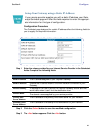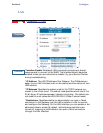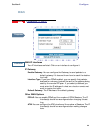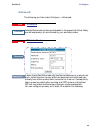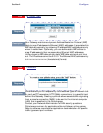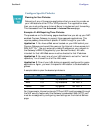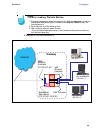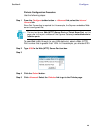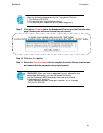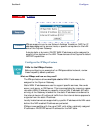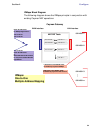
47
Section 4 Configure
Configure Specific Pinholes
Planning for Your Pinholes
Determine if any of the service applications that you want to provide on
your LAN stations utilize TCP or UDP protocols. If an application does,
then you must configure an Internal Server to implement port forwarding.
This is accessed from the Advanced -> Internal Servers page.
Example: A LAN Requiring Three Pinholes
The procedure on the following pages describes how you set up your NAT-
enabled Cayman Gateway to support three separate applications. This
requires passing three kinds of specific IP traffic through to your LAN.
Application 1: You have a Web server located on your LAN behind your
Cayman Gateway and would like users on the Internet to have access to it.
With NAT “On”, the only externally visible IP address on your network is
the Gateway’s WAN IP (supplied by your Service Provider). All traffic
intended for that LAN Web server must be directed to that IP address.
Application 2: You want one of your LAN stations to act as the “central
repository” for all email for all of the LAN users.
Application 3: One of your LAN stations is specially configured for game
applications. Again, you want this specific LAN station to be dedicated to
games.
A sample table to plan the desired pinholes is:
For this example, Internet protocols TCP and UDP must be passed through
the NAT security feature and the Gateway’s embedded Web (HTTP) port
must be re-assigned by configuring new settings on the Internal Servers
page.
WAN Traffic Type Protocol Pinhole Name LAN Internal IP Address
Web TCP my-webserver 192.168.1.1
Email TCP my-mailserver 192.168.1.2
Games UDP my-games 192.168.1.3





